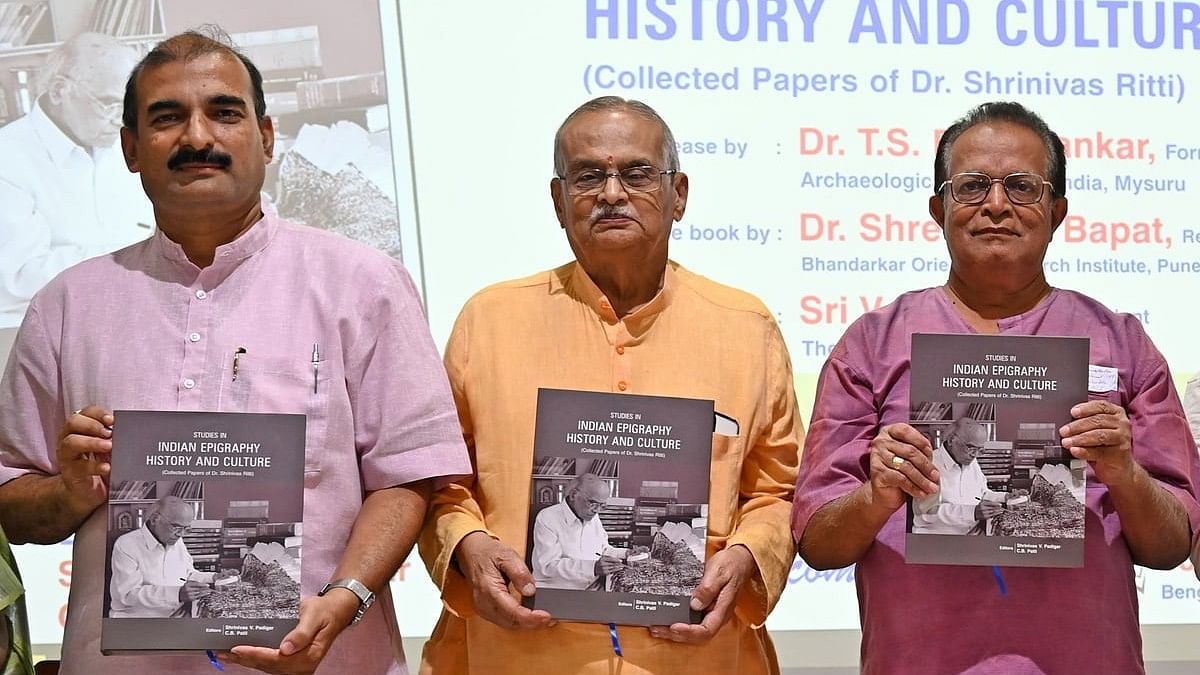
(L-R) Dr Shreenand Bapat, Registrar, Bhandarkar Oriental Research Institute, Pune; V Nagaraj, President, The Mythic Society, and Dr TS Ravishankar, Former Director (Epigraphy), ASI, Mysuru, release a book titled 'Studies in Indian Epigraphy, History and Culture', a collected papers of Dr Shrinivas Ritti at The Mythic Society in Bengaluru on Sunday.
Credit: DH PHOTO/PUSHKAR V
Bengaluru: It is widely believed that Buddhism declined in India by the end of the first millennium CE. However, was it alive in Karnataka several centuries later, too?
Shreenand Bapat, Sanskrit scholar and registrar of Bhandarkar Oriental Research Institute, Pune, quoted the late epigraphist Shrinivas Ritti to suggest that Buddhism may have been alive in Karnataka even as late as the 15-16th century CE.
He was speaking during the release of 'Studies in Indian Epigraphy History and Culture' — a compendium of 70 papers — by Prof Ritti at the Mythic Society on Sunday.
Discussing the first volume of the book on epigraphy and palaeography, Bapat referred to the four minor Ashokan edicts found at Nittur and Udegolam of Tumakuru and Ballari districts of Karnataka, respectively.
Quoting Ritti, Bapat noted that while most of the Sanskrit inscriptions were found on copper plates, their Kannada counterparts were found on stones. "Kannada language became more important during the Rashtrakutas and Chalukyas."
Epigraphist T S Ravishankar, former director (Epigraphy) at ASI, Mysuru, also spoke on the occasion. Terming Ritti a scholar par excellence, he said the book contains several articles covering different aspects of Indological studies, though mainly epigraphy.
Recalling Ritti as a caring person, Ravishankar praised him for the brevity in his writings. "We cannot add or remove a word since his writing is very crisp and lucid." He also recollected a personal anecdote where Ritti had attributed a morning walk as the key to the clarity in his writings.
The editors of the book are Shrinivas V Padigar and C B Patil — students of Ritti at the Department of Ancient Indian History and Culture at Karnatak University, Dharwad. Both of them spoke on the occasion. Padigar recollected his long association with his mentor and narrated a few anecdotes.
V Nagaraj, the president of the Mythic Society, presided over the programme. Ritti's son Pramod Ritti, daughter Prathiba, and many of his students, friends and relatives were present on the occasion.